Robert Hovden
Periodic Artifact Reduction in Fourier transforms of Full Field Atomic Resolution Images
Oct 14, 2022Abstract:The discrete Fourier transform is among the most routine tools used in high-resolution scanning / transmission electron microscopy (S/TEM). However, when calculating a Fourier transform, periodic boundary conditions are imposed and sharp discontinuities between the edges of an image cause a cross patterned artifact along the reciprocal space axes. This artifact can interfere with the analysis of reciprocal lattice peaks of an atomic resolution image. Here we demonstrate that the recently developed Periodic Plus Smooth Decomposition technique provides a simple, efficient method for reliable removal of artifacts caused by edge discontinuities. In this method, edge artifacts are reduced by subtracting a smooth background that solves Poisson's equation with boundary conditions set by the image's edges. Unlike the traditional windowed Fourier transforms, Periodic Plus Smooth Decomposition maintains sharp reciprocal lattice peaks from the image's entire field of view.
Sampling Limits for Electron Tomography with Sparsity-exploiting Reconstructions
Apr 04, 2019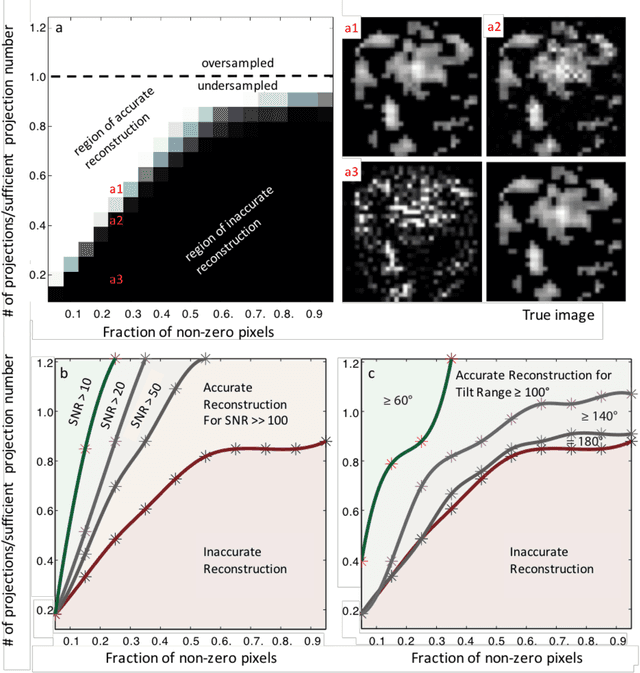
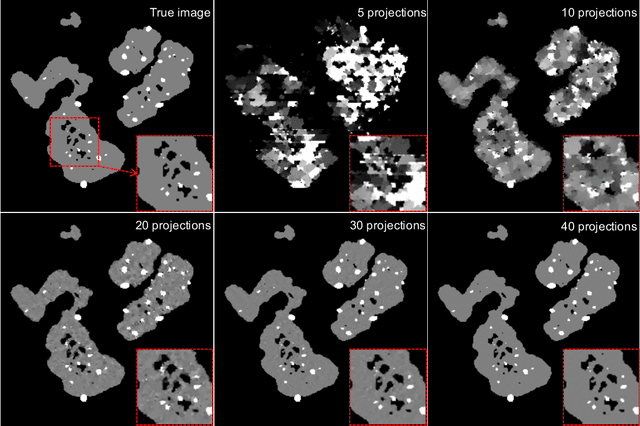
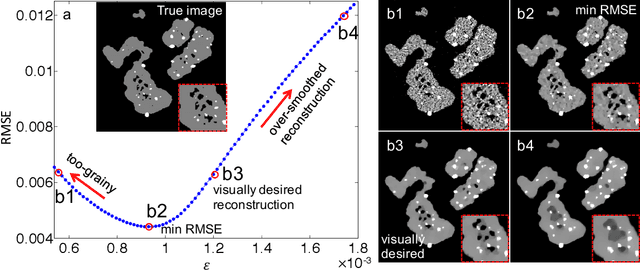
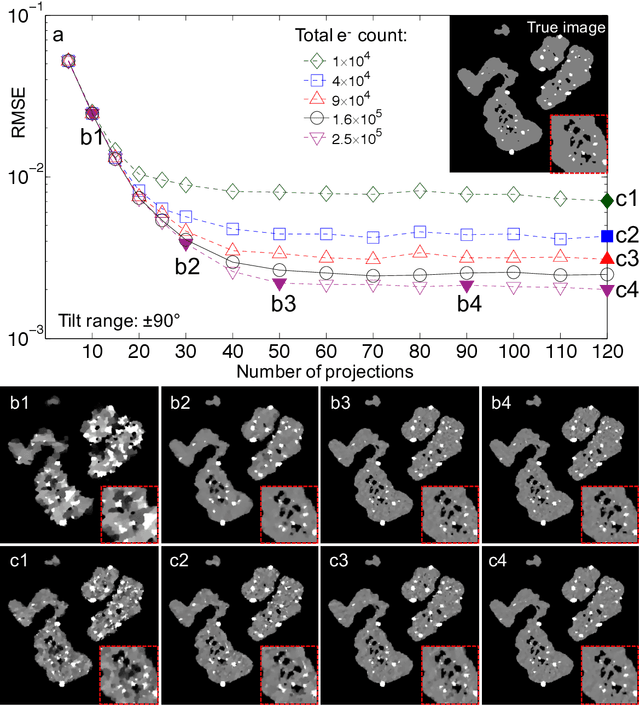
Abstract:Electron tomography (ET) has become a standard technique for 3D characterization of materials at the nano-scale. Traditional reconstruction algorithms such as weighted back projection suffer from disruptive artifacts with insufficient projections. Popularized by compressed sensing, sparsity-exploiting algorithms have been applied to experimental ET data and show promise for improving reconstruction quality or reducing the total beam dose applied to a specimen. Nevertheless, theoretical bounds for these methods have been less explored in the context of ET applications. Here, we perform numerical simulations to investigate performance of l_1-norm and total-variation (TV) minimization under various imaging conditions. From 36,100 different simulated structures, our results show specimens with more complex structures generally require more projections for exact reconstruction. However, once sufficient data is acquired, dividing the beam dose over more projections provides no improvements - analogous to the traditional dose-fraction theorem. Moreover, a limited tilt range of +-75 or less can result in distorting artifacts in sparsity-exploiting reconstructions. The influence of optimization parameters on reconstructions is also discussed.
Removing Stripes, Scratches, and Curtaining with Non-Recoverable Compressed Sensing
Jan 23, 2019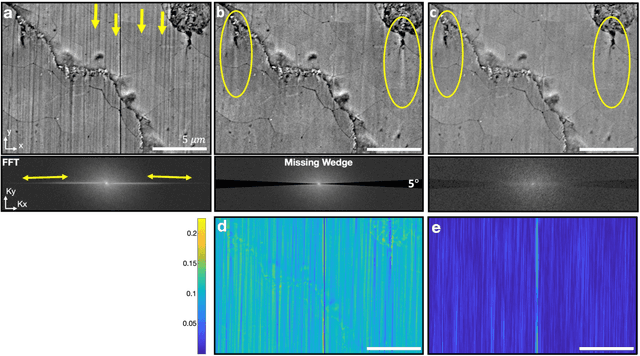
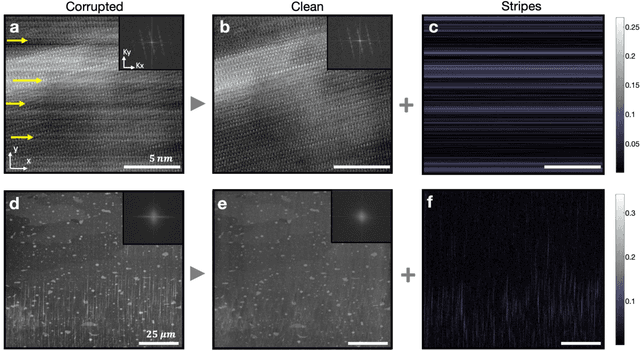
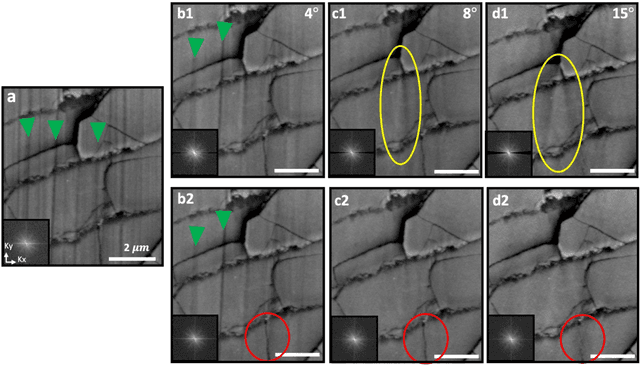
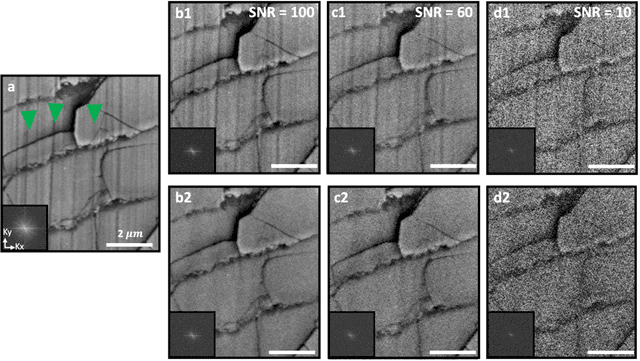
Abstract:Highly-directional image artifacts such as ion mill curtaining, mechanical scratches, or image striping from beam instability degrade the interpretability of micrographs. These unwanted, aperiodic features extend the image along a primary direction and occupy a small wedge of information in Fourier space. Deleting this wedge of data replaces stripes, scratches, or curtaining, with more complex streaking and blurring artifacts-known within the tomography community as missing wedge artifacts. Here, we overcome this problem by recovering the missing region using total variation minimization, which leverages image sparsity based reconstruction techniques-colloquially referred to as compressed sensing-to reliably restore images corrupted by stripe like features. Our approach removes beam instability, ion mill curtaining, mechanical scratches, or any stripe features and remains robust at low signal-to-noise. The success of this approach is achieved by exploiting compressed sensings inability to recover directional structures that are highly localized and missing in Fourier Space.
Data Processing For Atomic Resolution EELS
Dec 13, 2011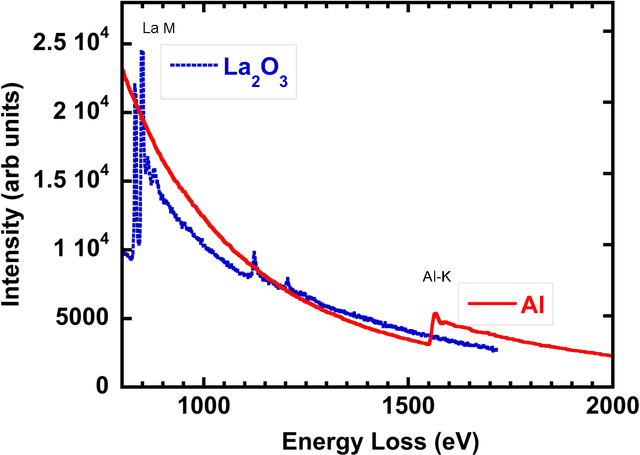
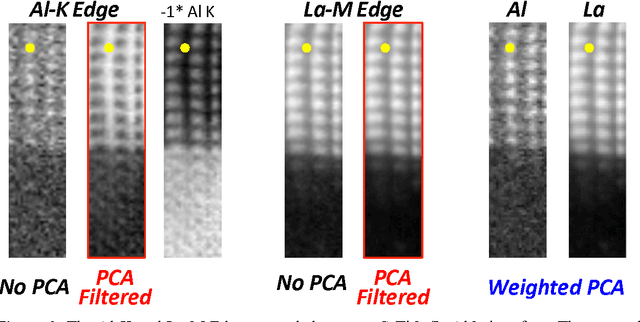
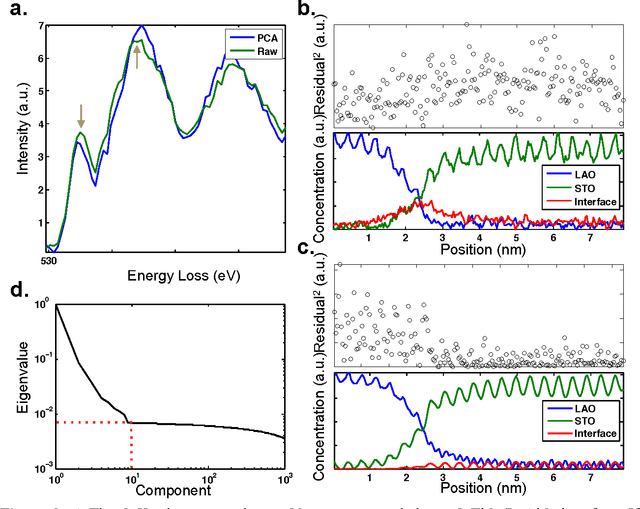
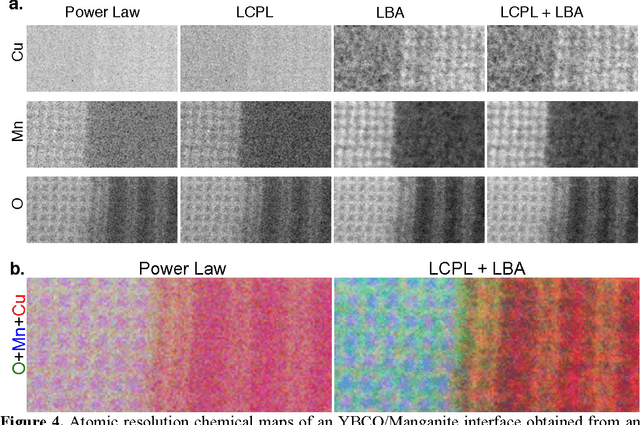
Abstract:The high beam current and sub-angstrom resolution of aberration-corrected scanning transmission electron microscopes has enabled electron energy loss spectroscopic (EELS) mapping with atomic resolution. These spectral maps are often dose-limited and spatially oversampled, leading to low counts/channel and are thus highly sensitive to errors in background estimation. However, by taking advantage of redundancy in the dataset map one can improve background estimation and increase chemical sensitivity. We consider two such approaches- linear combination of power laws and local background averaging-that reduce background error and improve signal extraction. Principal components analysis (PCA) can also be used to analyze spectrum images, but the poor peak-to-background ratio in EELS can lead to serious artifacts if raw EELS data is PCA filtered. We identify common artifacts and discuss alternative approaches. These algorithms are implemented within the Cornell Spectrum Imager, an open source software package for spectroscopic analysis.
 Add to Chrome
Add to Chrome Add to Firefox
Add to Firefox Add to Edge
Add to Edge